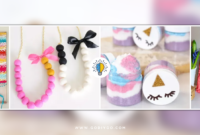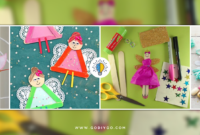
Epoxy-coated cutting boards are becoming increasingly popular among DIY hobbyists. They’re ideal for various applications, yet they’re quite simple to make. For instance, you can use it to serve or prepare food items.
Better still, you can use them as a gift or enhance your home decor.
And the good news is that you don’t even need to be a professional to make an epoxy cutting board yourself. Provided you know the basics of pouring epoxy, the process is very simple. In this tutorial, I’ll take you through the entire process from start to finish.
https://youtube.com/watch?v=FKUGGQbweF8%3Fstart%3D79
DIY Epoxy Cutting Board Making Supplies
- Cutting board wood
- Acrylic paint
- Protective gear (disposable gloves, respirator/mask)
- Disposable Mixing cups
- Measuring cups
- Epoxy Resin
- Stirring sticks
- Masking tape
- Craft knife
- Clean microfiber cloths
- Heat gun
- Toothpick
General Preparation and Precautions
Before you get started, there’re some general preparations and precautions you need to take. And those include;
1. Personal Safety
Most health issues associated with epoxy resin are considered minor. Nonetheless, you should aim to experience no health problems at all.
First, look for an epoxy resin that is free from hazardous ingredients. This will eliminate or reduce the source of harmful substances in the first place. On the same note, ensure the epoxy is food-safe, since the cutting board may be used for food preparation.
Secondly, wear safety glasses, goggles, protective clothing, gloves, and a respirator. A respirator protects you from the harmful fumes produced by epoxy in its curing state. Also, it prevents you from inhaling wood dust, and epoxy dust when sanding.
Lastly, make sure you’re undertaking your project in a well-ventilated area. This may include installing exhaust systems or window/ door fans to improve ventilation. Adequate ventilation helps to address the issue of epoxy dust and vapor.
2. Select the Wood Type
There are various types of wood you can use to make a cutting board. But I’d recommend that you stick to hardwood since it’s durable and can withstand various elements. The most common hardwoods include; oak, hickory, walnut, cherry, ash, mahogany, and maple.
3. Plane the Board
Before you cut the wood, run it through the planer to get the desired thickness. This process might produce a lot of noise. So it’s good to use ear protection.
4. Cutting the Shape

Once your piece of wood is flat, go ahead and cut it to the desired shape or size. If you intend to make many resin cutting boards, use a template to ensure all have the same size and shape. Besides, using templates will make this process fast and efficient.
5. Prepare Your Cutting Board
Lightly sand your cutting board with 80-grit sandpaper. Step up to 100, 120, 180, 220-grit, and finish sanding with 320-grit sandpaper. This will remove any splinters on the surface and ensure it’s perfectly smooth.
6. Tape off The Back of Your Board
Apply the masking tape across the underside of your piece. Remember to protect the rest of your piece with cling wrap. This will protect the underside from resin or paint drips that might overflow off the board’s edges.
If your piece has a hanging hole, cut the tape away from the hole. This will allow epoxy and paint to drip through the hole. And put a stretch of the tape around the edge.
7. Protect the Working Space
Working with epoxy can be very messy. That’s why it’s important to protect your work surface when undertaking any resin project. In this case, cover the work surface with plastic sheeting and apply some masking tape to hold it firmly.
This will prevent epoxy drips from going under the sheeting onto the tabletop. Also, place your cutting board on top of a disposable item to lift it above the working surface.
Steps of Making Epoxy Resin Cutting Board
1. Prepare Resin and Hardener
Start by calculating the amount of resin and hardener you’ll need for your cutting board. This will depend on the surface you wish to cover. Remember, resin and hardener comes in 2 separate containers. And the chemical reaction starts when you mix them.
With that in mind, use clean measuring cups to measure the amount of epoxy you need. In most cases, resin and hardener are mixed in a ratio of 1:1. But to be certain, read the instructions of the specific type epoxy you’re using.
Now, pour the 2 components into one large mixing cup. Using the stirring sticks, slowly mix it for about 3 minutes. Be sure to scrap the sides and bottom very well. This will eliminate the chance of leaving some parts unmixed thus making the layer tacky.
If you intend to color your mixture, pour your resin into 2 separate mixing cups. Add 2-3 drops of acrylic paint or your favorite resin coloring pigment to the 1st cup and continue stirring for another 2 minutes.
2. Apply the Resin Mixture
Gently pour the resin onto your cutting board and spread it with a clean stir stick. Let the resin drip over the sides and onto the work surface. Alternatively, you can gently tilt the board forwards and backward or side to side.
This will allow the epoxy to spread across the board. And now, to create artistic effects, pour the mixture in a wavy line or steady line. Then pour a second line with the colored resin and repeat the above process.
Additionally, you can blow between colors with a heat gun to create unique patterns.
3. Pop out Bubbles
Since you are pouring a fairly thin layer of epoxy, your mixture will not have too many bubbles. However, as resin starts to cure, bubbles will eventually start to form. Hence, you may use a needle/ toothpick to pop the larger bubbles.
To pop smaller bubbles, lightly run your heat gun over the epoxy resin surface. Keep it at least (6 to 7)” away from the surface. Otherwise, it can easily overheat the surface. After removing all bubbles, you will be left with a smooth finish.
4. Leave to Cure
Put the board on a level worktop and cover it to protect it from dust. Leave it alone for about 12 to 24 hours to allow the epoxy to cure. Some epoxy resins take up to 72 hours to cure fully. Either way, wait for your resin to cure before you proceed to the next step.
After the epoxy sets, flip your board over and gently peel off the masking tape. To remove the tape cleanly and more conveniently, blow the heat gun over it.
5. Sanding and Cleaning
Sand down the resin drips and any rough edges using 220-grit sandpaper. This will also clean up the cavities while preparing for the final touches. Cut back the overflow epoxy and sand the surface to an even finish.
This may require a few passes and some time. However, if done correctly, it will give your piece a polished finish and clean, smooth edges.
6. Finishing
Once you’re done sanding, use a plastic spreader to apply some mineral oil all over it. Repeat this process about 2 to 3 times to seal the board perfectly. Make sure you apply the oil to the sides, front, and back of your cutting board.
Leave it for about 15 to 30 minutes, and then wipe off any excess oil. Next, apply wax over it and leave it for another 15 minutes. Using a rotary buffer or clean dry cloth, polish the surface until you get the desired gloss.
Now, let your cutting board cure fully. Over time, the surfaces will start to marbleize, giving you an outstanding finish.
Conclusion
Epoxy cutting boards provide a beautiful way of displaying your interest in food art. Better still, they’ll have many uses in your kitchen.
And as you can, making one isn’t a complicated process. Just follow the steps above and you’ll successfully create your 1st epoxy resin cutting board. One thing you need to remember though is that these boards should be made with non-toxic epoxy.
Also, you need to apply a thin layer of mineral oil to make it food safe. This process should be done after every 4 weeks to keep your boards in a good condition.



